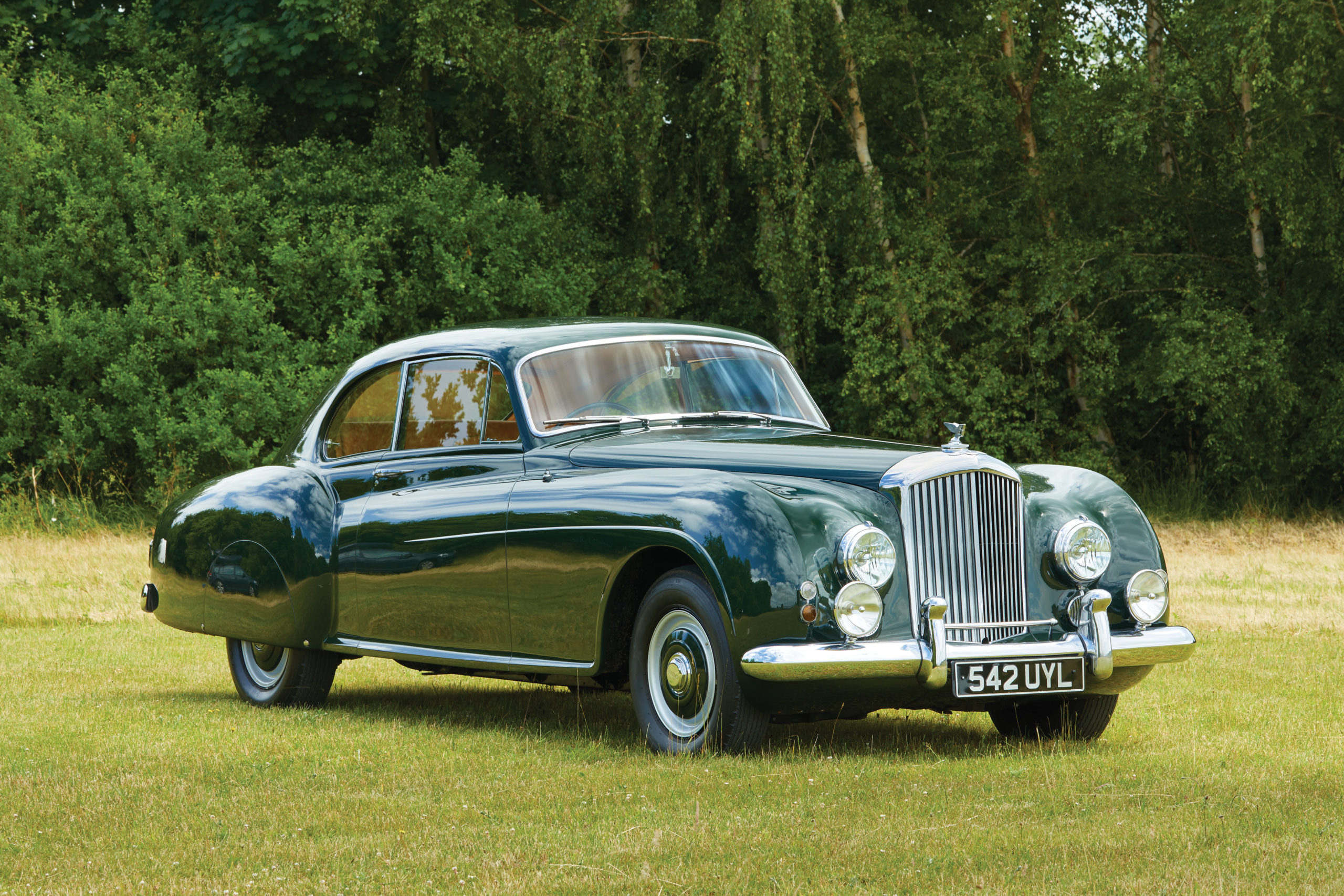SCM Analysis
Detailing
| Vehicle: | 1953 Bentley R-Type Continental |
| Years Produced: | 1952–55 |
| Number Produced: | 208 |
| Tune Up Cost: | $400 |
| Chassis Number Location: | Plate on scuttle |
| Engine Number Location: | Left side of block |
| Club Info: | Bentley Drivers Club |
| Website: | http://www.bdcl.org |
| Alternatives: | 1949 Cadillac Series 62 Club Coupe, 1954–62 Facel Vega FV/FVS/HK500, 1954–56 Jaguar Mk VII M |
| Investment Grade: | A |
This car, Lot 12, sold for $740,999 (£641,250), including buyer’s premium, at Gooding & Company’s London, U.K., auction on September 3, 2022.
Only 208 Bentley R-type Continentals were built from May 1952 to April 1955, including the prototype, “Olga” (registration OLG 490), which is still with us. The most expensive production car of its era, the hand-assembled and superbly finished R-type Continental was able to cruise at high speed all day. Some 193 of these — including this early example — were fitted with the fastback body design by H.J. Mulliner, which the market has deemed the most desirable.
It was superseded when Bentley changed chassis to the S-type in 1955. These were superficially similar but heavier, built in larger numbers and available in more body styles. They sell for about a third of a proper, original “magic carpet” R-type.
As well as being some of the most stylish automobiles ever made, R-types are for driving; even today they can cover vast distances in comfort and style. Despite this, the market for these cars generally appears to have fallen since 2015, even as other marques and types have more recently made up lost ground.
High speed, downward trajectory
Our subject is the 19th Continental built, given the marque’s traditional exclusion of 13 in its numerical system. We’ve met it at auction a couple of times before, and both times fallen for its lovely lived-in patina. This is a car that’s been looked after and titivated when necessary rather than being completely restored in one go. As such, it retains that quality that’s impossible to buy — originality. A restoration might have seen it turned out in a much cooler black or silver, but in its original green it falls into an unthreatening “nice old thing” category.
These were million-dollar (and million-pound) automobiles at one stage, but both the market and the pound have slipped back somewhat. This very car sold for $1.2m in August 2014 with RM Auctions in Monterey (SCM# 6710877), then failed to sell for $918k with RM Sotheby’s at Villa Erba, Italy, in May 2017 (SCM# 6839174). This time it sold for a lot less — just $741k — though some of that has been the slide of the pound against the dollar. Overall, in dollars we’re looking at a nearly 40% drop in just eight years.
An expert’s perspective
Let’s hear why from the experts. Giles and Emma Crickmay run Frank Dale & Stepsons, a Bentley and Rolls-Royce service and sales specialist established in London in 1946. They have been immersed in these cars all their lives.
They say, “From 2000 onwards, Bentley R-type Continentals enjoyed a steady and sustained upward appreciation in terms of asset value until around 2014. Right-hand-drive manual cars, in good to excellent condition, were selling consistently for around £800,000 to £850,000 ($1.35m to $1.4m) at that time. Left-hand-drive cars were fetching more due to their lower production numbers (43) and wider audience.
“Back then there were between one and three cars on the market globally at any one time. However, an auction held in London in late 2014 changed this landscape. Essentially, two buyers bid a specific car up in a seemingly entertaining but competitive exchange and it sold for just over £1,000,000 [$1.7m; SCM# 245305]. It was the first time a right-hand-drive manual car had passed the million-pound mark, a watershed moment.
“One swallow doesn’t make a summer, and as several cars didn’t sell for the same lofty (and inflated) figure, confidence eroded slightly. Couple this with several cars coming to market all at once (10 at one time) and the supply-and-demand factor changed too. Inevitably, over the following years the prices, in our opinion, corrected themselves back to the level which they reached around 2014.
“Something similar happened this year with a left-hand-drive car. It was purchased at auction for $3m in a very high-profile bidding war at Amelia Island [SCM# 6951950]. A further two manual-transmission left-hand-drive cars were then offered at Pebble Beach with optimistic estimates, but neither sold. They were both great cars and both are very valuable, but again, one result doesn’t make them all worth such numbers.”
How low can they go?
The Crickmays’ position appears to be that £800k–£850k ($885k–$940k) is again the right sort of price for very good examples. Our subject car, nicely lived-in and not in receipt of a recent restoration, sold for less, which is probably a correct auction price with a margin left in it for retail. So, at this sale we should probably mark it down as “slightly well bought.”
Some would think it’s a great time to buy, while the more pessimistic — or optimistically hopeful — will sit tight to see if Continentals will fall further. (Along the way, S-type Contis have dropped back too.) It may be that general buyer demographics are against it, a phenomenon that affects a lot of older cars as younger buyers favor the models they dreamed about as kids. But watching “W.O.” Bentleys rebounding in the past two years, I wouldn’t bet on it. ♦
(Introductory description courtesy of Gooding & Company.)



